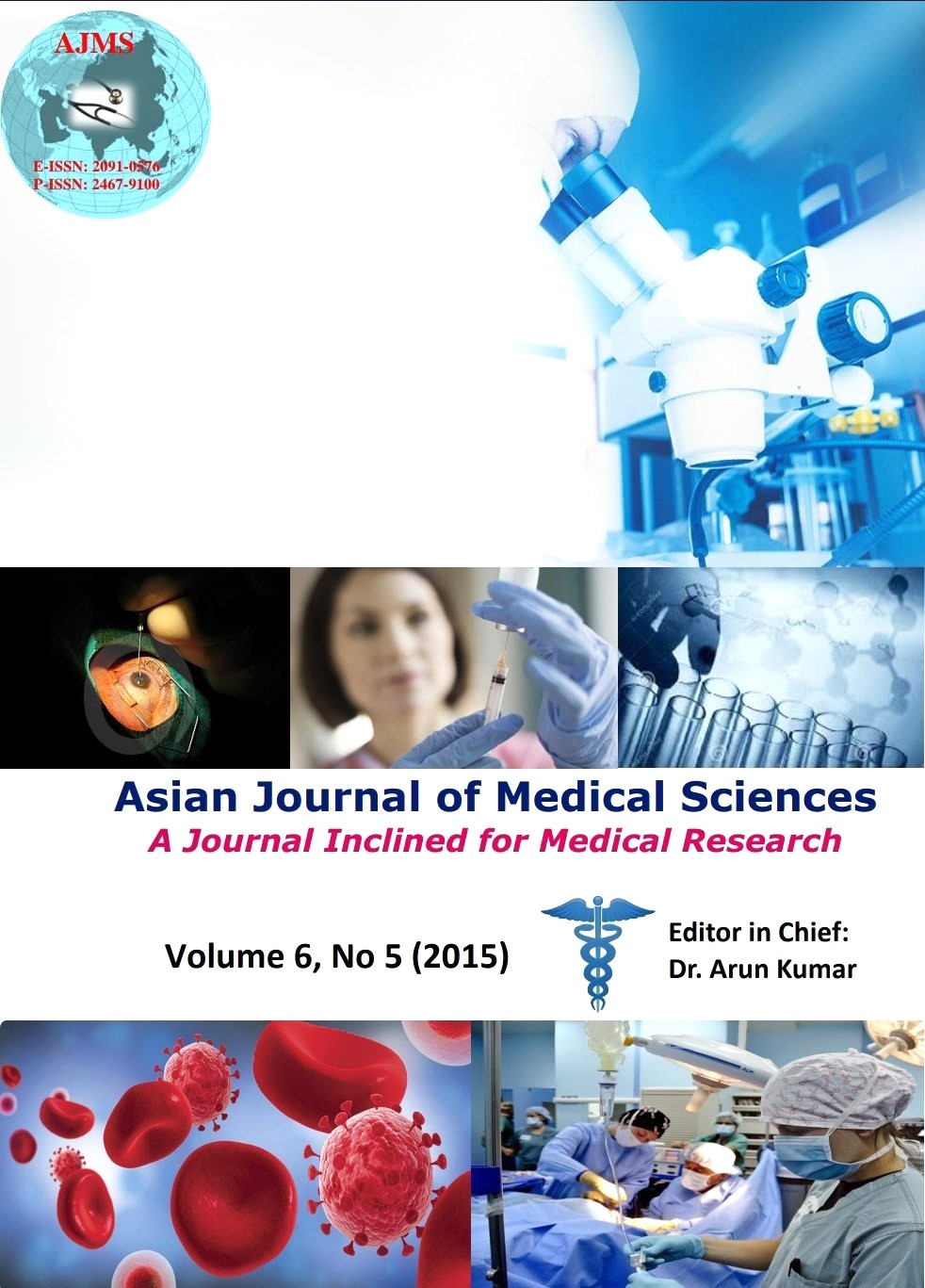Clinical and Socio demographic profile of attendees at ART centre in a tertiary care hospital in Mangalore, India
Keywords:
HIV, ART CENTRE, Sociodemographic profileAbstract
Introduction: India has the third largest number of people living with HIV/AIDS. There is a need to study the profile of patients who come to ART centers and link their clinical and socio-demographic variables in the management. Moreover, it is important to understand the presentation of HIV disease in the local context and culture. The present study is aimed at identifying the socio-demographic characteristics, clinical presentations of HIV/AIDS patients, opportunistic infections and the possible risk factors for acquiring HIV infection at an ART centre of Government Wenlock hospital, situated in Karnataka state of India.
Materials and Methods: In this study 102 HIV patients attending the HIV clinic were enrolled and they were followed for a period of one year with relevant investigations.
Results: Of 102 patients 69 were males and 33 were females.The mean age of the study subjects at the time of diagnosis was 38.06. Heterosexual contact was the commonest mode of transmission in96 (94.12%) patients. History suggestive of a risk factor for HIV transmission could not be elicited in 4 (3.92%) patients. Fever (71.5%), weight loss (62.74%), cough (51.96%) and chronic diarrhea (43.9%) were the common presenting symptoms. The most common opportunistic infection was oral candidiasis (66.67%) followed bytuberculosis (22.54%) and pneumocystis pneumonia (13.72%). Significant number of patients (30.37%) developed Zidovudine induced anemia and females were more prone for Zidovudine induced anemia as compared to males. CD4 counts of the patients were significantly inversely correlated with the number of symptoms and the number of opportunistic infections.
Conclusion: Majority of patients were of low socioeconomic status and in productive age group with heterosexual contact being commonest mode of transmission.Significant number of patients developed Zidovudine induced anemia and females were more prone.
DOI: http://dx.doi.org/10.3126/ajms.v6i5.11622
Asian Journal of Medical Sciences Vol.6(5) 2015 61-65
Downloads
Downloads
Published
How to Cite
Issue
Section
License
Authors who publish with this journal agree to the following terms:
- The journal holds copyright and publishes the work under a Creative Commons CC-BY-NC license that permits use, distribution and reprduction in any medium, provided the original work is properly cited and is not used for commercial purposes. The journal should be recognised as the original publisher of this work.
- Authors are able to enter into separate, additional contractual arrangements for the non-exclusive distribution of the journal's published version of the work (e.g., post it to an institutional repository or publish it in a book), with an acknowledgement of its initial publication in this journal.
- Authors are permitted and encouraged to post their work online (e.g., in institutional repositories or on their website) prior to and during the submission process, as it can lead to productive exchanges, as well as earlier and greater citation of published work (See The Effect of Open Access).




